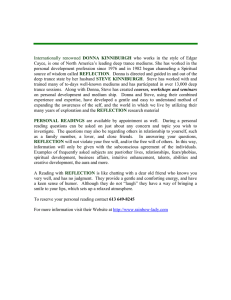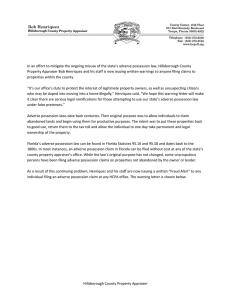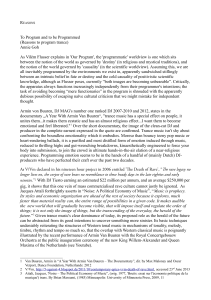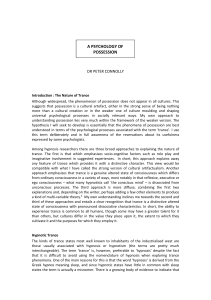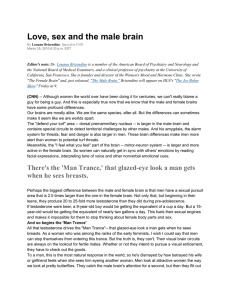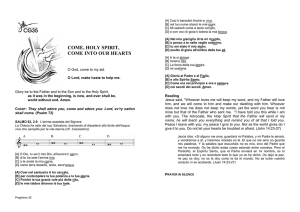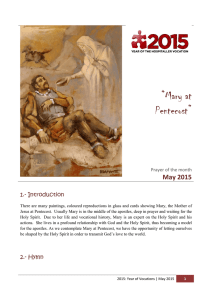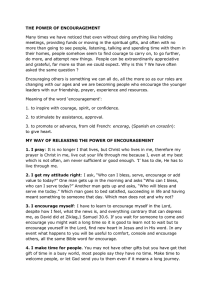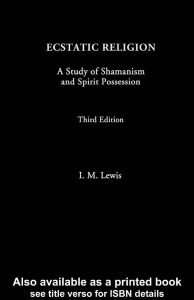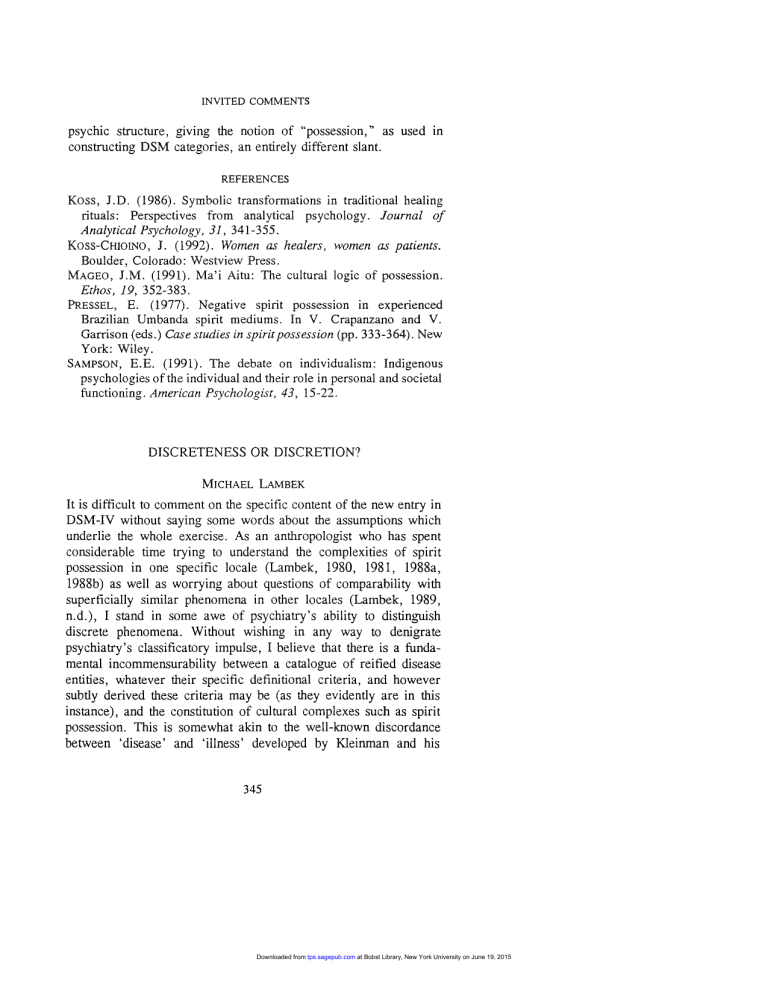
psychic structure, giving the constructing DSM categories, notion of an entirely &dquo;possession,&dquo; as used in different slant. REFERENCES Koss, J.D. (1986). Symbolic transformations in traditional healing rituals: Perspectives from analytical psychology. Analytical Psychology, 31, 341-355. KOSS-CHIOINO, J. (1992). Women as healers, women Journal as of patients. Boulder, Colorado: Westview Press. MAGEO, J.M. (1991). Ma’i Aitu: The cultural logic of possession. Ethos, 19, 352-383. PRESSEL, E. (1977). Negative spirit possession in experienced Brazilian Umbanda spirit mediums. In V. Crapanzano and V. Garrison (eds.) Case studies in spirit possession (pp. 333-364). New York: Wiley. SAMPSON, E.E. (1991). The debate on individualism: Indigenous psychologies of the individual and their role in personal and societal functioning. American Psychologist, 43, 15-22. DISCRETENESS OR DISCRETION? MICHAEL LAMBEK It is difficult to comment on the specific content of the new entry in DSM-IV without saying some words about the assumptions which underlie the whole exercise. As an anthropologist who has spent considerable time trying to understand the complexities of spirit possession in one specific locale (Lambek, 1980, 1981, 1988a, 1988b) as well as worrying about questions of comparability with superficially similar phenomena in other locales (Lambek, 1989, n.d.), I stand in some awe of psychiatry’s ability to distinguish discrete phenomena. Without wishing in any way to denigrate psychiatry’s classificatory impulse, I believe that there is a fundamental incommensurability between a catalogue of reified disease entities, whatever their specific definitional criteria, and however subtly derived these criteria may be (as they evidently are in this instance), and the constitution of cultural complexes such as spirit possession. This is somewhat akin to the well-known discordance between ’disease’ and ’illness’ developed by Kleinman and his 345 Downloaded from tps.sagepub.com at Bobst Library, New York University on June 19, 2015 (e.g., Kleinman, 1983), a distinction which has served recognize paradoxes in our thinking than to resolve them. The point is simply that there are no clear, absolute, readily distinguishable boundaries between &dquo;spirit possession&dquo; as it is found among the Bongo Bongo and neighbouring phenomena, whether &dquo;ancestor worship&dquo; or &dquo;seizures&dquo; among the Bongo Bongo, or &dquo;spiritt possession&dquo; among other peoples. Hence, the very distinction between &dquo;trance&dquo; and &dquo;possession trance&dquo; in the proposed criteria for &dquo;Trance and [sic] Possession Disorder&dquo; (a distinction stemming from the work of the anthropologist Erika Bourguignon, e.g., 1967), associates more to is itself of dubious value for any cultural system that does not try to reach absolute distinctions between reified entities. In my way of thinking, spirit possession is better understood in terms of text and context than in terms of an organic metaphor. Hence, where the proposed DSM criteria properly include reference to the important condition that &dquo;the trance or possession trance is not authorized as a normal part of a collective cultural or religious practice,&dquo; I would want to add that such authorization may be precisely what is at issue, what is being negotiated by the participants in a given expression or series of expressions of possession. To say that the two orders of thought or expression are incommensurable is not to resort to the complacent cultural relativist attitude that the aim of the DSM is simply wrong. But it is to question just what it is that the DSM describes or creates. And it is to ask the proponents of the DSM to remind the readers of their manual to ask themselves just for what purpose they want to make a specific distinction or identification. It seems to me that when users of the manual attempt to make a specific diagnosis, they are moving back from the system of abstract classification, the world of reified entities, to matters of text and context. In this move from theory to practice, from classification to authorization, they must ask themselves not only about the presenting &dquo;symptoms&dquo; but also about the possible consequences of labelling a certain behaviour one way or another, or even of having to label it at all. In the end, the point of the diagnostic criteria ought to be to help distinguish when a discrete and positive identification might have therapeutic use and when it might be better to stand back and leave matters of expression and authorization to the rightful subjects of the possession phenomena. There are moments when wisdom is silence. 346 Downloaded from tps.sagepub.com at Bobst Library, New York University on June 19, 2015 REFERENCES BOURGUIGNON, E. (1967). World distribution and patterns of possession states. In R. Prince (Ed.) Trance and Possession States (pp. 3-34). Montreal: R.M. Bucke Foundation. KLEINMAN, A. (1983). Editor’s note. Culture, Medicine, and Psychiatry, 7, 97-99. LAMBEK, M. (1980). Spirits and spouses: Possession as a system of communication among the Malagasy speakers of Mayotte. American (2), 318-331. Ethnologist, 7 LAMBEK, M. (1981). Human spirits: A cultural account of trance in Mayotte. New York and Cambridge: Cambridge University Press. Cambridge Studies in Cultural Systems, Clifford Geertz, series editor. LAMBEK, M. (1988a). Spirit possession / Spirit succession: Aspects of social Ethnologist, 15 710-731. continuity in Mayotte. American (4), LAMBEK, M. (1988b). Graceful exits: Spirit possession as personal (1), 59-69. performance in Mayotte. Culture VIII LAMBEK, M. (1989). From disease to discourse: Remarks on the conceptualization of trance and spirit possession. In C. Ward (Ed.), of Consciousness and Mental Health: A CrossCultural Perspective (pp. 36-61). London: Sage Press. LAMBEK, M. (n.d.). On being plural. Paper presented to the Canadian Altered States Anthropology Society, Montreal, May 1992. ARE TRANCE AND POSSESSION DISORDERS LINKED TO HIGH HYPNOTIZABILITY? CAMPBELL PERRY In the Introduction to DSM-III-R, Spitzer and Williams (1987) pointed to the central issue posed by any new proposed classification of a mental disorder in general. It is this particular litmus test against which the proposal for any new nosological category in medicine or psychiatry such as Trance and Possession Disorders must necessarily be evaluated. They wrote about the process leading to the publication of DSM-III-R in these terms: &dquo;In attempting to evaluate proposals for revisions in the classification and criteria, or for adding new categories, the greatest weight was given to the presence of empirical support from well-conducted research studies, though, for most 347 Downloaded from tps.sagepub.com at Bobst Library, New York University on June 19, 2015
